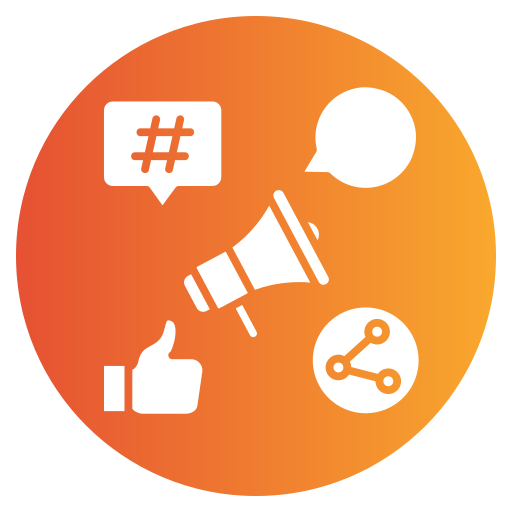Learning Objective
By the end of this lesson, you will be able to:
- Define what conversion is and why it is important for digital marketing and sales
- Identify the main psychological factors that influence conversion
- Apply conversion psychology and persuasion techniques to optimize your website and campaigns
- Evaluate the effectiveness of your conversion strategies using data and testing
Overview
The psychology of conversion is the study of how and why potential customers decide to buy a product or service online. Conversion is the ultimate goal of any digital marketing and sales strategy, as it means generating revenue and growing the business. Therefore, understanding the psychological factors that influence conversion is essential for any digital marketer or salesperson.
Some of the main psychological factors that affect conversion are:
- Trust and credibility
- Value proposition and benefits
- Emotions and motivations
- Friction and resistance
By applying these principles and strategies, marketers and salespeople can create a user experience that converts more visitors into customers.
Context and Content
Conversion is not a one-time event, but a process that involves multiple steps and interactions. Depending on the type and complexity of the product or service, the conversion process may vary in length and difficulty. However, a common framework that can be used to describe the conversion process is the AIDA model, which stands for:
- Attention: The first step is to attract the attention of the potential customer and make them aware of your product or service. This can be done through various channels, such as search engines, social media, email, or ads.
- Interest: The second step is to generate interest in your product or service and make the potential customer want to learn more. This can be done by highlighting the features and benefits of your product or service, and how it can solve their problems or satisfy their needs.
- Desire: The third step is to create desire in your product or service and make the potential customer want to buy it. This can be done by appealing to their emotions and motivations, and creating a sense of urgency, scarcity, or exclusivity.
- Action: The final step is to prompt the potential customer to take action and buy your product or service. This can be done by providing clear and compelling calls to action, reducing friction and resistance, and offering incentives or guarantees.
By understanding the conversion process and the psychological factors that influence each step, marketers and salespeople can design and optimize their website and campaigns to guide the potential customer along the journey and increase the conversion rate.
Importance of Conversion in Digital Marketing
The importance of conversion in digital marketing and sales cannot be overstated. Conversion is the key metric that determines the success and profitability of any online business. By increasing the conversion rate, marketers and salespeople can:
- Increase revenue and return on investment (ROI)
- Reduce customer acquisition cost (CAC)
- Improve customer loyalty and retention
- Gain competitive advantage and market share
Therefore, conversion is not only a goal, but a means to achieve other goals and grow the business.
Case Study
To illustrate the power and impact of conversion psychology and persuasion techniques, let’s look at a case study of how Booking.com, one of the world’s leading online travel platforms, uses them to optimize their website and increase conversions.
Booking.com is known for its extensive use of social proof, urgency, scarcity, and other persuasive elements to influence the behavior and decisions of its visitors. Some examples of these elements are:
- Showing the number of people who are viewing or booking the same property
- Showing the number of rooms left or the availability dates
- Showing the ratings, reviews, and awards of the property
- Showing the discounts, deals, and free cancellation options
- Showing the best price guarantee and price match promise
- Showing the countdown timer and the last booking time
These elements create a sense of trust, value, desire, and action in the visitors, and motivate them to book their accommodation as soon as possible. According to a study by ConversionXL, Booking.com has an average conversion rate of 4.3%, which is significantly higher than the industry average of 2.4%. This means that Booking.com converts more than twice as many visitors into customers than its competitors, and generates more revenue and profit.
Research Findings
The psychology of conversion is not only based on intuition and experience, but also on scientific research and evidence. There are many studies and experiments that have tested and validated the effectiveness of various conversion psychology and persuasion techniques. Some of the most notable and relevant findings are:
- Emotions and motivations are the driving forces behind human behavior and decision-making. According to a study by Antonio Damasio, people who have impaired emotional functioning due to brain damage have difficulty making decisions, even when they have all the relevant information and rational arguments. This suggests that emotions play a crucial role in decision-making, and that appealing to emotions and motivations can increase the likelihood of conversion. For example, using storytelling, emotional triggers, urgency, scarcity, or exclusivity can elicit positive or negative emotions, such as happiness, fear, curiosity, or envy, and motivate the potential customer to take action.
- Friction and resistance are the obstacles and barriers that prevent the potential customer from completing the purchase, such as confusion, distraction, doubt, or hesitation. According to a study by Baymard Institute, the average cart abandonment rate is 69.8%, which means that more than two-thirds of the potential customers who add a product to their cart do not complete the purchase. This indicates that friction and resistance are major challenges for conversion, and that reducing friction and resistance can increase the conversion rate. For example, using simple and intuitive design, clear and consistent navigation, easy and secure checkout, or user-friendly features can minimize friction and resistance, and facilitate the purchase process.
How to Use the Psychology of Conversion Today
Now that you have learned the basics of the psychology of conversion, you may be wondering how to use it in your own digital marketing and sales activities. Here are some practical steps and tips that you can follow to apply the psychology of conversion today:
- Define your conversion goals and metrics: Before you start optimizing your website and campaigns, you need to define what conversion means for your business, and how you will measure and track it. For example, your conversion goal could be to generate leads, sales, sign-ups, downloads, or any other desired action. Your conversion metric could be the conversion rate, which is the percentage of visitors who complete the conversion goal, or the conversion value, which is the revenue or profit generated by the conversion.
- Analyze your current conversion performance and identify areas of improvement: Once you have defined your conversion goals and metrics, you need to analyze your current conversion performance and identify the strengths and weaknesses of your website and campaigns. You can use various tools and methods, such as Google Analytics, heat maps, user feedback, or surveys, to collect and analyze data and insights about your visitors, their behavior, and their feedback. You can then use this information to identify the areas of improvement and the opportunities for optimization.
- Implement conversion psychology and persuasion techniques to optimize your website and campaigns: Based on your analysis and findings, you can implement conversion psychology and persuasion techniques to optimize your website and campaigns, and improve your conversion performance. You can use the AIDA model and the psychological factors that influence conversion as a guide to design and optimize each step and element of your website and campaigns. You can also use best practices and examples from successful websites and campaigns, such as Booking.com, as a reference and inspiration.
- Test and evaluate the effectiveness of your conversion strategies and make adjustments as needed: After you have implemented your conversion strategies, you need to test and evaluate their effectiveness and impact on your conversion performance. You can use various tools and methods, such as A/B testing, multivariate testing, or split testing, to compare and contrast different versions of your website and campaigns, and measure their conversion rates and values. You can then use this data and feedback to determine which version performs better and why, and make adjustments as needed.
What is Social proof, Emotional triggers and A/B testing?
- Social proof is a psychological phenomenon where people tend to follow the behavior or opinions of others, especially when they are uncertain or unsure. Social proof can increase conversion by providing evidence that your product or service is trustworthy, valuable, and popular. Some examples of social proof are:
- Emotional triggers are stimuli that evoke strong emotional reactions, such as anger, sadness, or fear. Emotional triggers can influence conversion by appealing to the feelings and motivations of your potential customers, and creating a sense of urgency, scarcity, or exclusivity. Some examples of emotional triggers are:
- A/B testing is a method of comparing two versions of a variable, such as a web page, a page element, or an ad, to determine which one performs better and drives more conversion. A/B testing can help you optimize your website and campaigns by testing different hypotheses and measuring the results. Some examples of A/B testing are:
- Images: These are the visual elements that your potential customers see on your website or ad, which can convey your value proposition and benefits. For example, you can test different images to see which one generates more engagement, trust, or conversion.
- Calls to action: These are the buttons or links that your potential customers click on your website or ad, which can prompt them to take the desired action. For example, you can test different calls to action to see which one generates more leads, downloads, or purchases.
- Colors: These are the hues or shades that your potential customers see on your website or ad, which can affect their mood and perception. For example, you can test different colors to see which one generates more attraction, contrast, or readability.
- Layouts: These are the arrangements or structures of your website or ad, which can affect the user experience and navigation. For example, you can test different layouts to see which one generates more clarity, simplicity, or usability.
We hope this explanation has helped you understand the concepts of social proof, emotional triggers, and A/B testing, and how they can be used to increase conversion.
Additional Resources and Topics
If you want to learn more about the psychology of conversion and related topics, here are some additional resources and topics that you can explore:
We hope you found this content helpful please like, share and leave a comment.













